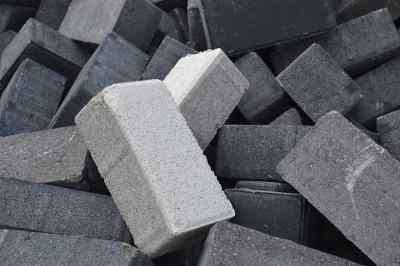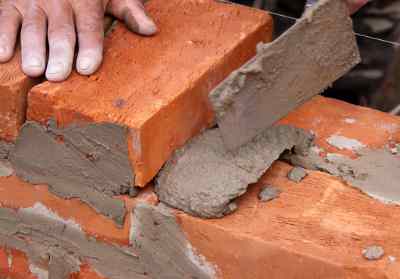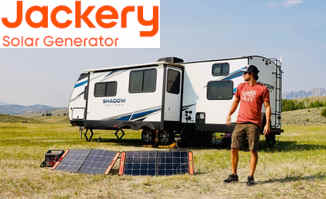How To Make Cement And Concrete From Scratch

Well keep on reading and you can learn the easy steps to making your own concrete. Each ingredient is explained with easy to understand detailed instruction each step of the process.
OK so you want to build something, and you want it to be more permanent than with untreated wood. You decide cement or concrete is what you need. However since the SHTF you can't go to your local hardware store and buy a bag of cement. Sure would be nice to be able to make some yourself. Well the good news is you can just as long as you have a little knowledge.
Good thing you are printing all this out... right!
Before we get started let's go over a few definitions.
Cement is pulverized limestone, oysters, freshwater mussels or seashells that have been heated to high heat to remove CO2.
Concrete is a mixture of cement, water, sand and gravel.
Mortar is a mixture of cement, water, sand and lime.
Alright, looks like you will need some limestone. If, like me you do not live where there is limestone then Oyster shells or seashells can be substituted for limestone when making your cement.
But you're not a geologist? How do you know if rock you found is limestone and not some other rock like granite?
There are a couple of ways you can test your rock to see if it is limestone or not. First test is to take some vinegar or an acid and put some on the rock. Now watch to see if the vinegar fizzles. If it does, if you see bubbles and hear a popping sound then you have found limestone. Dolomite will fizzle also but only when powdered.
Another method is by using coin to scratch the rock. If the scratch leaves and imprint then you are probably holding limestone.
Okay on to making some cement.
Gather your limestone and burn it. By burn it I don't mean light it on fire which obviously isn't going to happen. Burn means to heat it very hot for a long time.
So you will have to make a kiln/oven for this. A kiln can be made out of clay but that is another subject. When firing up the kiln for it to work you need it to get real hot. The hotter the better and you need the temperature to stay hot for a while so you are going to have to keep the fire going for a while by adding more fuel. Don't let the term fuel scare you off as the fuel can be hardwood wood. It doesn't have to be anything exotic or modern.
To help do this successfully it will pay dividends to first break up your limestone into as small of pieces as practically possible. The larger the rocks the higher the heat must be and the longer the process will take.
So put your limestone in the kiln and get that fire going. Keep it hot for a few hours. If you did this properly, meaning you reached high enough temperatures for long enough the limestone should crumble fairly easily.
After it has cooled sufficiently you might have some pieces that are less crumbly than others. The harder less crumbly pieces should be separated and refired in the kiln with the next batch of limestone or discarded.
A word of caution: A respirator is very useful here because you don't want to breath any of the dust and also you don't want to touch the burnt lime with your hands, so use gloves. This stuff is nastier than you think it will take your flesh off due to its caustic nature. Caustic is the opposite of acidic!!!

As you add water, it will hiss and crumble due to a chemical reaction which can be dangerous. Once the chemical reaction is complete you can use the product as mortar.
To make concrete though which will greatly extend the volume produced you mix in gravel or sand or crushed brick. Proportions are an endless subject of debate but the formula of 1 part cement, 2 parts sand and 3 parts gravel by volume is a good starting point.
Mix the dry ingredients first and then slowly add water. You want "workable" concrete. As you add water the concrete will go from unworkable to workable to sloppy. You obviously want workable, but what is workable???
To test, take a cup and fill the cup with your concrete solution. At first as you add water it will retain its shape when turned over and the cup removed. As you add water the test cup of concrete will settle more and more. You want it to settle to about half of the original height. If you add too much water the concrete gets too sloppy and spreads out more and the only way to fix that is to add more cement and sand to your concrete.
Remember that water is the key ingredient. Too much water makes a weak concrete. Too little water results in a concrete that is not workable.
It is somewhat of an art when doing all of this the first time. Do not just jump in and do each step on an industrial scale the first time. Start off small and once you have all the steps done successfully on a small scale you will then be able to more confidently move to a larger scale, so that you can actually make a house foundation or whatever it is you are planning on making with your concrete.
Additional hints tips:
When slacking lime you can use low water amounts and you will be left with a powder or more water and be left with putty. Either can be used as cement when making concrete.
As CO2 in the atmosphere reacts with the cement in your concrete it reverts back to limestone. Basically turns back into stone.
River sand is different (smoother) than sand from dirt. Sand from dirt yields better concrete than river sand. You can separate sand out of yard dirt by putting it in a bucket and separating off the sand from the rest of the dirt. The sand is the biggest component of soil and will settle out first. As it settles just pour off the rest of the water to remove the silt and clay.
Concrete that includes embedded metal is called reinforced concrete.
Get creative. Concrete isn't just for foundations.
Addendum thanks to questions by readers:
Egg shells finely ground up can be substituted to replace 10% of the quick lime! NOT 10% of the entire concrete mix... just 10% of the quick lime component!


